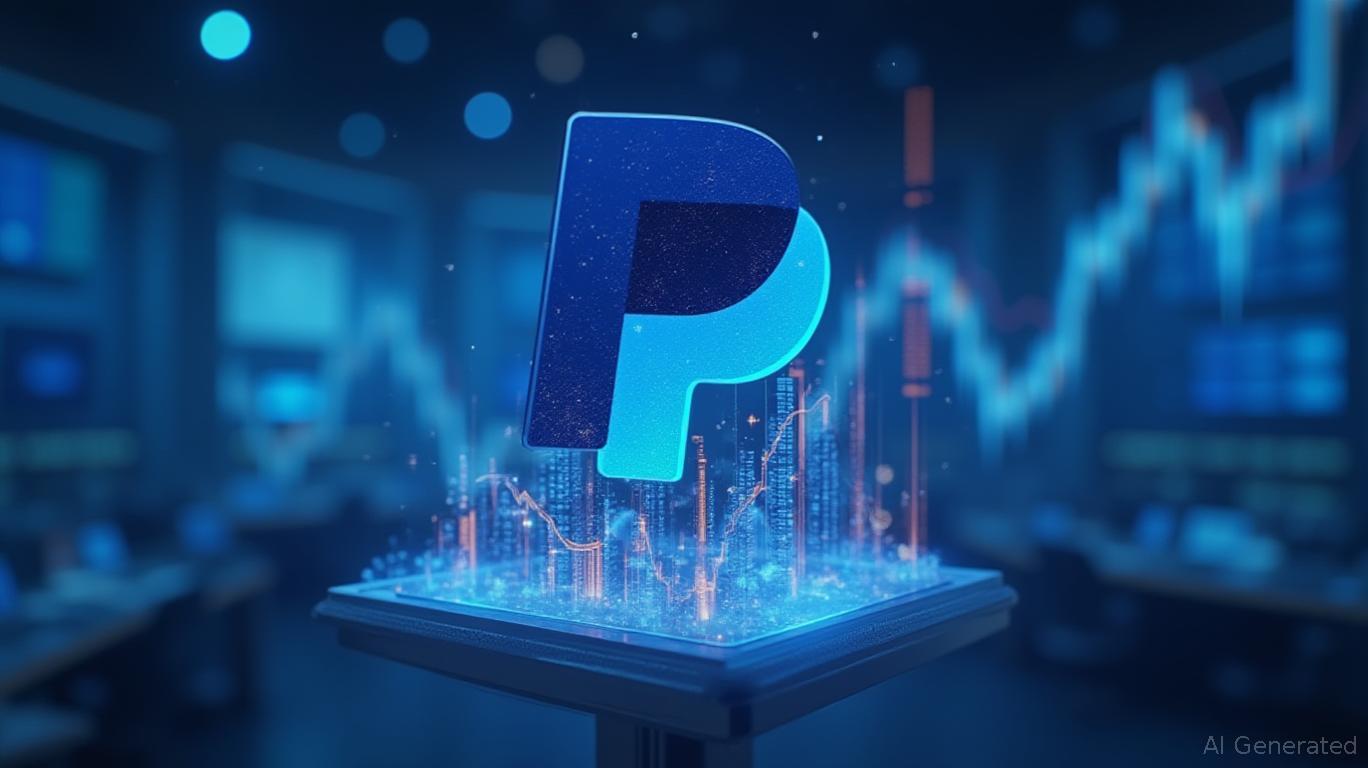Why PayPal (PYPL) Is a Hidden Gem in the Digital Payments Landscape: A Value Investor's Playbook
The digital payments sector has faced headwinds from macroeconomic uncertainty and regulatory scrutiny, yet PayPal (PYPL) remains an underappreciated value proposition. With a P/E ratio of just 13.5x—far below the S&P 500's average of 18.2x—and $6 billion to $7 billion in annual free cash flow, the company is positioned to outperform as structural shifts in commerce accelerate. CEO Alex Chriss's turnaround has delivered five consecutive quarters of profitable growth, while strategic bets on AI-driven ad revenue, small-business (SMB) partnerships, and Venmo's expansion into physical retail are primed to fuel margin stabilization and EPS reacceleration. Here's why investors should ignore near-term noise and consider PayPal a compelling buy.
1. Valuation: A Discounted Growth Story

PayPal trades at a P/E of 13.5x, nearly 26% below the S&P 500's average and 50% below its own five-year average of 27x. This discount ignores the company's strong fundamentals:
- Free Cash Flow (FCF) Stability: PayPal generated $6.7 billion in trailing twelve-month FCF as of Q2 2025, up 96% annually over the past year. Its FCF-to-sales ratio of 18% outperforms peers like Visa (V) and Mastercard (MA), which rely more on transaction fees.
- Undervalued vs. Peers: PayPal's P/E is half that of Visa (32x) and 40% below Mastercard (22x), despite its dominance in payment processing and digital wallet ecosystems.
The market's skepticism is misplaced. PayPal's valuation reflects pessimism around near-term risks—such as U.S.-China trade tensions and recession fears—rather than its long-term growth trajectory.
2. Margin Stabilization: The Power of Scale and Cost Discipline
PayPal's non-GAAP operating margin has climbed to 25% in Q1 2025, up from 21% in 2021, thanks to Chriss's cost-cutting and revenue diversification. Key drivers include:
- Checkout Simplification: Reducing friction for merchants and consumers has boosted transaction volume by 8% YoY, with Venmo's “Pay with Venmo” in-store TPV up 50%.
- AI-Driven Ad Revenue: PayPal's new ad platform, leveraging user transaction data, is generating $200 million+ in incremental revenue annually by matching SMBs with relevant customers.
- SMB Partnerships: Over 4 million SMBs now use PayPal's ecosystem, with cross-selling of BNPL (buy now, pay later) and invoicing tools driving 12% YoY revenue growth in enterprise services.
These initiatives have created a $1.4 billion annual run rate in new revenue, with margins expected to expand further as scale benefits materialize.
3. Strategic Initiatives: Fueling EPS Growth Through Innovation
Chriss's playbook isn't just about cost cuts—it's about reinvesting in high-margin adjacencies:
- Venmo's Physical Play: Venmo's in-store adoption now accounts for $15 billion in annual TPV, with partnerships at Walmart and Target driving 30% YoY MAU growth. This reduces reliance on volatile e-commerce and opens new revenue streams.
- AI-Powered Efficiency: PayPal's AI tools, such as fraud detection and customer service chatbots, have cut operating costs by $400 million annually, while improving conversion rates.
- Global Expansion: The rollout of BNPL services in Europe and Southeast Asia is capturing $2 billion in incremental TPV, with margins exceeding 30% due to low capital intensity.
These moves are on track to deliver 8–10% transaction volume growth by 2027, aligning with management's targets.
4. Buybacks: A Catalyst for EPS Reacceleration
PayPal's $20 billion buyback program, with $6 billion allocated for 2025, is a game-changer. At its current $70 stock price, repurchases could reduce shares outstanding by 6–8% annually, directly boosting EPS.
With $10.9 billion remaining under its authorization and free cash flow expected to hit $5 billion in 2025, the company has ample capacity to accelerate repurchases if valuations dip further. This creates a double leverage effect: higher earnings growth from operational improvements and share count reduction.
5. Addressing Near-Term Concerns: Why the Risks Are Overdone
Critics cite macro risks like a potential U.S.-China trade deal and recession-driven spending cuts. However:
- Trade Tariffs: PayPal's cross-border transaction volume grew 15% YoY in Q1 2025, with Asia-Pacific revenue up 20%. Even if tariffs ease, PayPal's SMB tools and BNPL services remain sticky.
- Recession Resilience: PayPal's $17.3 billion cash pile and $6 billion+ annual FCF provide a buffer against downturns, while its low-cost structure (e.g., Venmo's sub-$100 million operating margin) ensures profitability.
Conclusion: A Buy at 13.5x P/E with 30% Upside Potential
PayPal is trading at a valuation that doesn't account for its margin improvements, AI-driven revenue streams, or the EPS boost from buybacks. With a $70 stock price and a $6.24 TTM FCF per share, the P/FCF ratio of 11.2x is a steal compared to its historical median of 24.4x.
Investment Thesis:
- Buy: Target price of $90–$95 within 12–18 months, based on 16x 2026 EPS and margin expansion.
- Hold: For investors seeking a stable cash flow generator with minimal downside risk.
The near-term volatility is a gift for long-term investors. With structural tailwinds in digital payments, PayPal's undervaluation, andChriss's execution, this is a rare opportunity to buy a growth story at a value price.
Final Note: The market's focus on short-term noise ignores PayPal's long-term moat. Investors who act now may reap rewards as the company's strategic bets mature and buybacks amplify earnings.

Comments
No comments yet